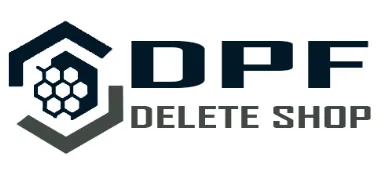Make: Volvo
Engine: All Engines (2017 Emissions)
Fauld Code: P208E00
PID: EMS
SPN: N/A
FMI: N/A
Description: Aftertreatment Reagent Dosing Valve Clogged
Troubleshooting:
Conditions for diagnostic trouble code (DTC):
1) Active DTCs in EATS System
2) Other DTCs detected may be the reason for the selected DTC to be set. The
recommendation is to fault trace and repair the other DTCs first. Repairing the other detected
DTCs may change selected DTC to inactive.
Action
1) Aftertreatment Control Module (ACM)
2) Fault trace active diagnostic trouble codes (DTCs) on above components
Make: Volvo
Engine: All Engines (2017 Emissions)
Fauld Code: P20CF7A
PID: EMS
SPN: N/A
FMI: N/A
Description: Exhaust Aftertreatment Fuel Injector “A” Stuck Open
Troubleshooting:
The Aftertreatment Hydrocarbon Dosing Module contains three non serviceable valves, the
Aftertreatment Fuel Shutoff Valve, Aftertreatment Purge Air Valve and Aftertreatment
Hydrocarbon Dosing Valve, and a serviceable Aftertreatment Fuel Pressure Sensor.
During DPF regeneration the Engine Control Module (ECM) sends a voltage signal to activate
the Aftertreatment Fuel Shutoff Valve to the open position. This allows fuel to flow into the
Aftertreament Hydrocarbon Dosing Module. The Aftertreatment Fuel Pressure Sensor monitors
the fuel pressure value and sends a reference signal to the ECM. The ECM then sends a PWM
signal to the Aftertreatment Hydrocarbon Dosing Valve that regulates the amount of fuel
delivered to the Aftertreatment Hydrocarbon Doser through the air/fuel line.
During Air Purge operation the Engine Control Module (ECM) sends a voltage signal to activate
the Aftertreatment Purge Air Valve open. This allows air pressure to flow into the Aftertreament
Hydrocarbon Dosing Module. The ECM then sends a PWM signal to the Aftertreatment
Hydrocarbon Dosing Valve that allows purge air pressure to be monitored by a signal from the
Aftertreatment Fuel Pressure Sensor to the ECM.
Conditions for diagnostic trouble code (DTC):
1) Aftertreatment Fuel Pressure, not within expected range
2) Fuel leakage
Observable symptoms
1) Regeneration not possible
Probable cause
1) Aftertreatment Hydrocarbon Dosing Module
Make: Volvo
Engine: All Engines (2017 Emissions)
Fauld Code: P20DC00
PID: EMS
SPN: N/A
FMI: N/A
Description: Exhaust Aftertreatment Fuel Supply Control
Troubleshooting:
The Aftertreatment Hydrocarbon Dosing Module contains three non serviceable valves, the
Aftertreatment Fuel Shutoff Valve, Aftertreatment Purge Air Valve and Aftertreatment
Hydrocarbon Dosing Valve, and a serviceable Aftertreatment Fuel Pressure Sensor.
During DPF regeneration the Engine Control Module (ECM) sends a voltage signal to activate
the Aftertreatment Fuel Shutoff Valve to the open position. This allows fuel to flow into the
Aftertreament Hydrocarbon Dosing Module. The Aftertreatment Fuel Pressure Sensor monitors
the fuel pressure value and sends a reference signal to the ECM. The ECM then sends a PWM
signal to the Aftertreatment Hydrocarbon Dosing Valve that regulates the amount of fuel
delivered to the Aftertreatment Hydrocarbon Doser through the air/fuel line.
During Air Purge operation the Engine Control Module (ECM) sends a voltage signal to activate
the Aftertreatment Purge Air Valve open. This allows air pressure to flow into the Aftertreament
Hydrocarbon Dosing Module. The ECM then sends a PWM signal to the Aftertreatment
Hydrocarbon Dosing Valve that allows purge air pressure to be monitored by a signal from the
Aftertreatment Fuel Pressure Sensor to the ECM.
Conditions for diagnostic trouble code (DTC):
1) Aftertreatment Fuel Pressure, not within expected range
2) Fuel pressure fault
Observable symptoms
1) Regeneration not possible
Probable cause
1) Fuel pressure
2) Fuel line(s)
3) Aftertreatment Hydrocarbon Dosing Module
Make: Volvo
Engine: All Engines (2017 Emissions)
Fauld Code: P20EE00
PID: EMS
SPN: N/A
FMI: N/A
Description: SCR NOx Catalyst Efficiency Below Threshold (Bank 1)
Troubleshooting:
When the aftertreatment selective catalytic reduction (SCR) system operates under normal
conditions, the aftertreatment control module (ACM) monitors diesel exhaust fluid (DEF) dosing
valve duty cycle and DEF pump control value. When the DEF dosing valve duty cycle
increases above allowed threshold and the DEF pump control value decreases below expected
threshold, the ACM stops DEF dosing and reports a fault. The fault might be indication of
electrical failure or blockage in DEF dosing valve or DEF supply line from the DEF tank.
Conditions for diagnostic trouble code (DTC):
1) Reduced NOx conversion
Observable symptoms
1) Too high NOx emissions
2) Engine de-rated
Probable cause
1) Clogged muffler
2) DEF Dosing
3) DEF concentration
